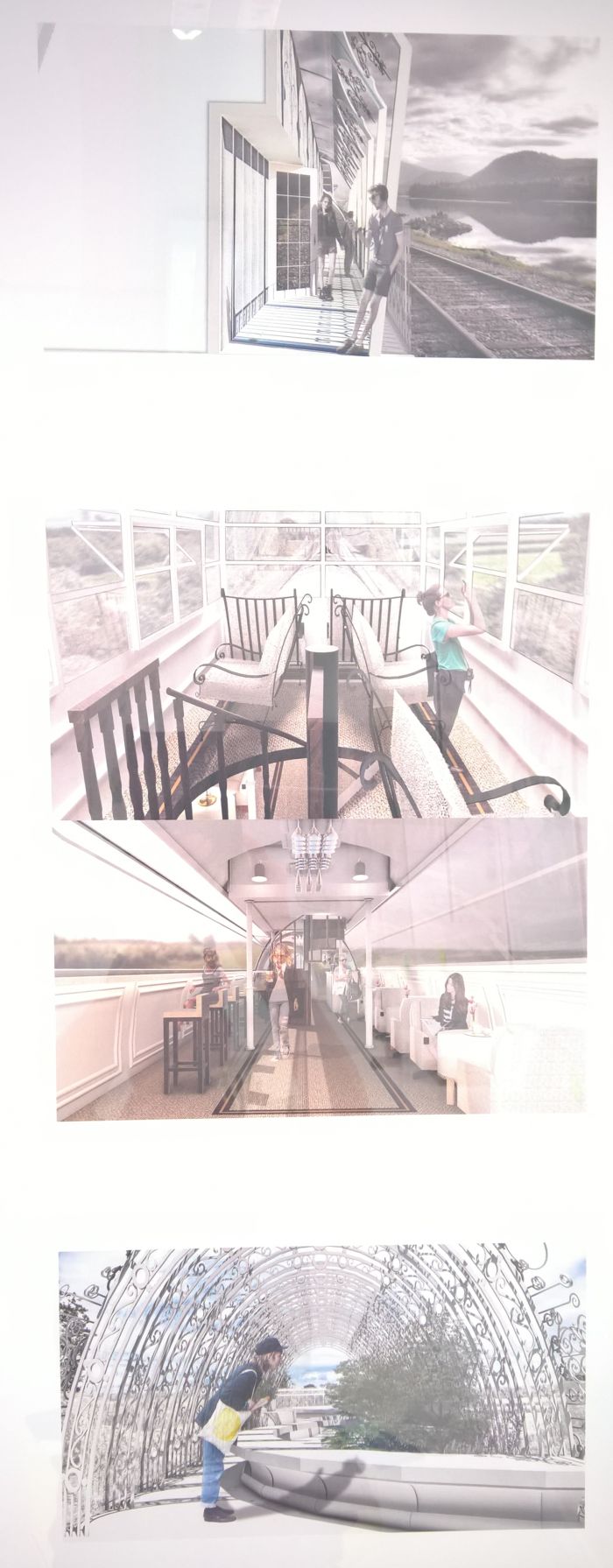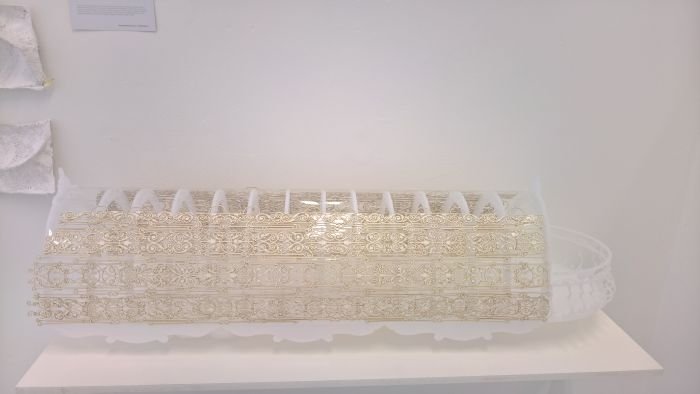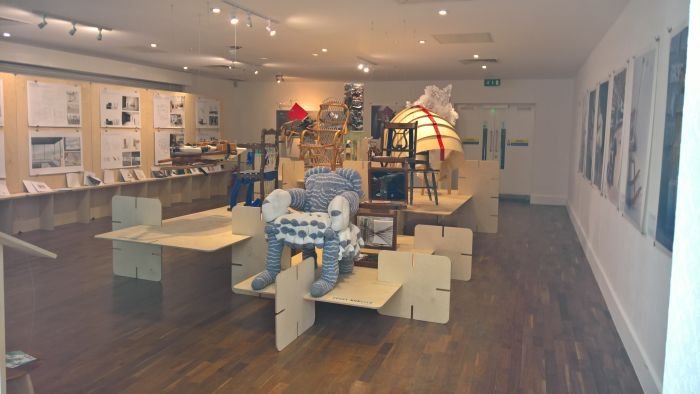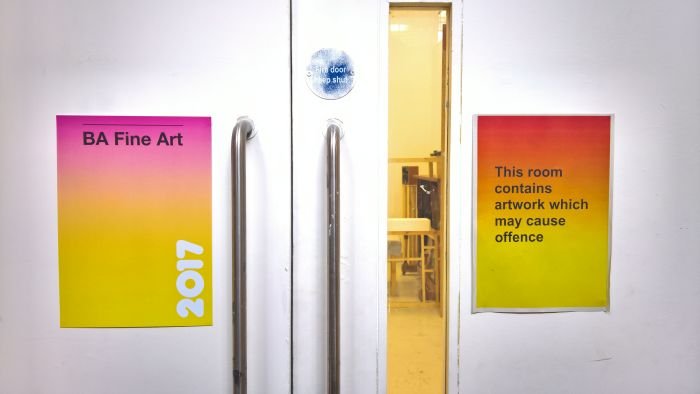Sited in the gentile calm of Pimlico, Chelsea College of Arts sits between the independent free-thinking of the Tate Britain, the original Tate with its collection of British and international art from 1500 until today, and the state control and surveillance of the British Secret Intelligence Service, MI6, in their unobtrusive bunker on the opposite bank of the Thames
But where would the conformity/rebellion equilibrium be found amongst the current crop of Chelsea students.......
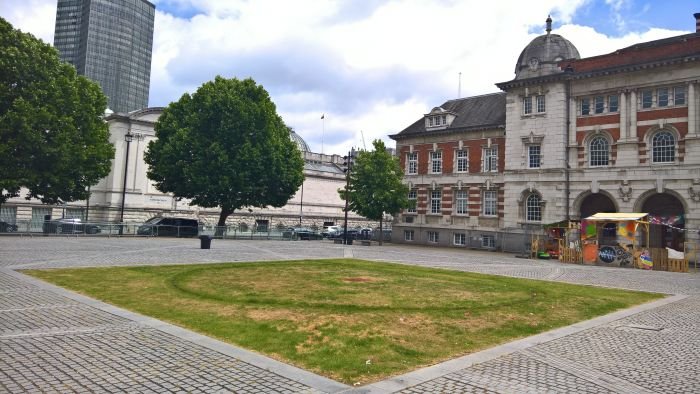
Established in context of a 1908 merger between Chelsea Polytechnic Art School and Hammersmith School of Art, Chelsea College of Arts is very much a college with a focus on art, notable recent alumni including, amongst many, many others, Chris Ofili, Peter Doig and Anish Kapoor. The college's focus on art is however no restricted, exclusive one and design education at Chelsea College of Arts dates back to the 1930s and the introduction of courses in craft and design, including subjects such as package design, knotted rugs, commercial design and what the archives charmingly refer to as "painted furniture". So none of that unpainted nonsense.
Incorporated into the London Institute in 1986 and subsequently the University of the Arts London in 2004, making it a sibling institute of Central St Martins, Chelsea College of Arts offers foundation, undergraduate and postgraduate courses in Fine Art, Curating, Graphic Design Communication, Textile Design and Interior & Spatial Design.
In terms of design Chelsea's most famous non-alumnus is unquestionably Tom Dixon who spent six months at the college in the 1970s, and who believes that part of his success originates, in effect, from the fact he didn't graduate, "If I had spent more time at art school, I would have been told to do this, or not to do that. There was great liberation in just being able to make different things using found objects, without having to justify myself." An interesting position in context of our #campustour. And one we feel certain we will return to.
After that is we have considered the works of those currently justifying themselves. Be that to the college, their conscience or the spooks across the river......
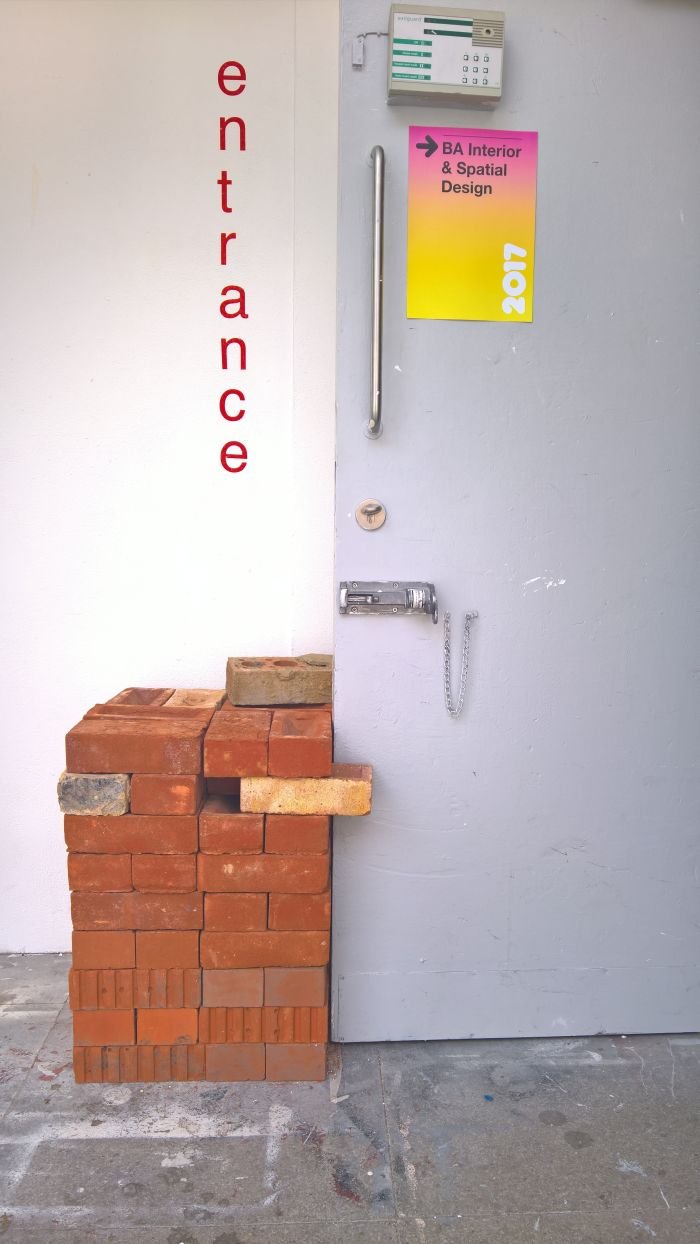
A bijou affair, as befits Pimlico, the presentation of the design courses at Chelsea College of Arts Summer Show began with what we are now calling, the Lund Opening: a sign on the door to the Interior & Spatial Design Bachelor exhibition simply stating "Sorry, closed early due to unforeseen circumstances"
Once more we found ourselves facing the fabled locked door of student graduate exhibitions.
But a door which, as good fortune would have it, was locked not because of early closing, but late opening. The note being from the previous day, and the new day getting of to a leisurely start. A leisurely start which allowed us to visit the presentation of projects by students of the Foundation Degree in Interior Design, Bachelor in Textile Design and the various Fine Art ateliers, before returning to, the now fully open, Interior & Spatial Design Bachelor exhibition.
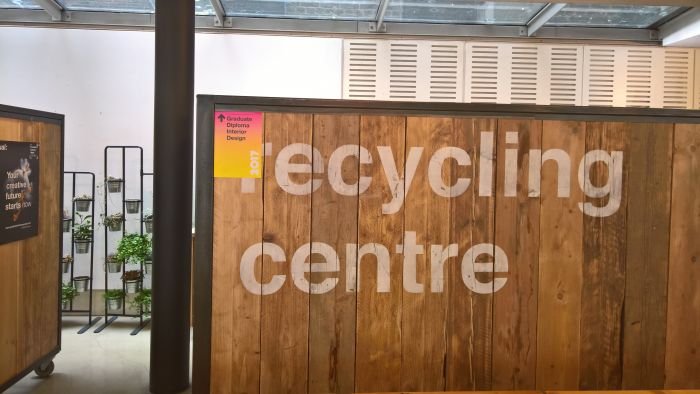
What seems like a lifetime ago we posted the Panton Remake project by Alessandro Barison and his fellow students at the Scuola Italiana Design, a project which, in effect, transformed the Vitra Panton Chair into a trolley bag. Much as we enjoy/enjoyed that project it did involve transforming the chair into something much bulkier.
Created in context of the Foundation Degree in Interior Design's Super Normal class, Urbane Nomad is a much more satisfying object, imagining as it does not only a new typology of luggage, but a new typology of chair, and that without moving that far from the original.
Starting from a standard wooden dinning chair seat and backrest to which four further seat frames have be joined, the students have created through the possibility of "upholstering" the seats with clothes, papers, treasures, dark secrets, an absolutely charming chair-cum-rucksack which combines the necessity of storage space with the practicality of somewhere to sit when your train is delayed. And which can also be used at home as a decorative, yet functional and practical, chair-cum-cupboard.
As regular readers will be aware, for us upcycling must result in an object which not only has an inherent integrity and value above that of the salvaged material of which it is composed, but must also be a product intended to last, and must explain its value, integrity and longevity. Although arguably not conceived as an upcycling project, Urbane Nomad meets all such criteria, and that with a delightful Victorian explorer accent. We can well imagine 19th century tweed clad gents wandering the Alps with such on their backs.
All that's missing is a proper upholstered cushion on the top.
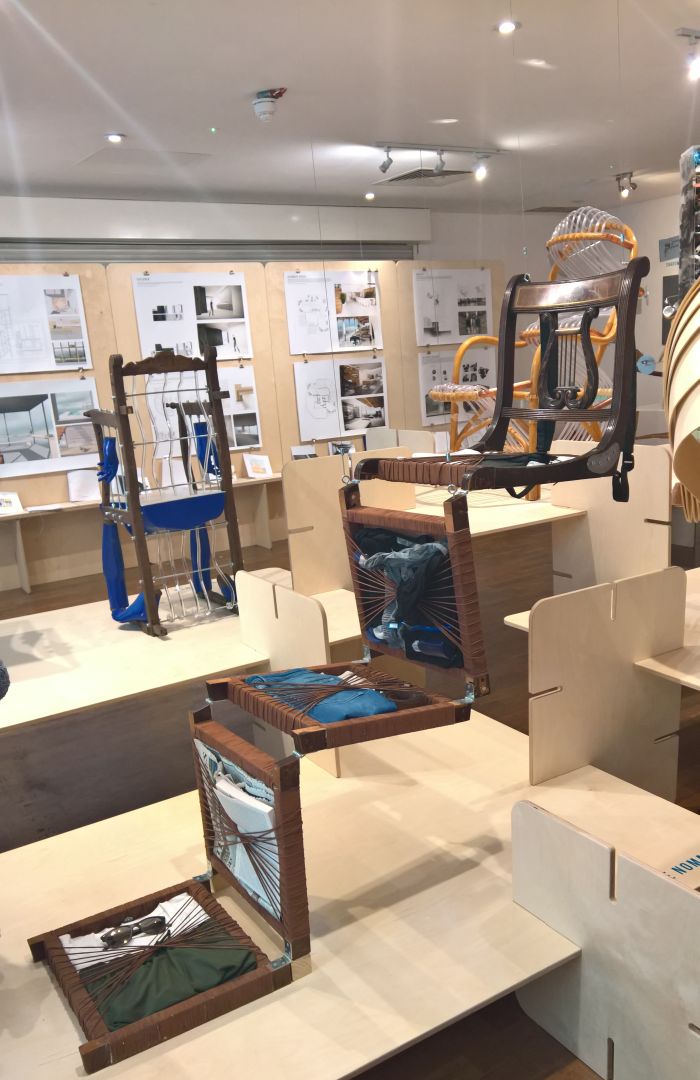
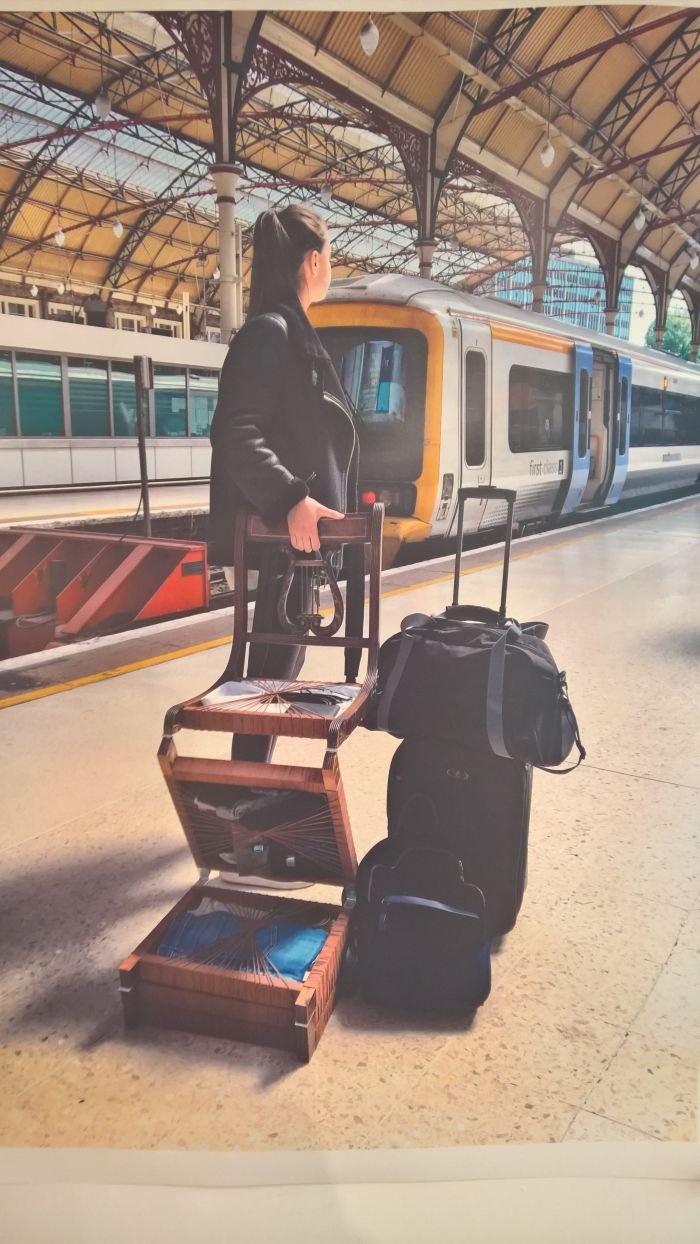
Back at Dutch Design Week 2016 we got quite excited about the project Living Landscapes by Julia Bocanet, which proposed, in effect, making smaller spaces appear bigger through granting each room one single function. And one function only.
The projects Æffect and The Affix Gallery by second year students on the Foundation Degree in Interior Design both envisage making small spaces seems larger through abstraction of the space, making the interior of a small flat, in effect, a maze where one is continually confronted by changing perspectives, room dimensions, lighting, colours, scales, etc, etc, etc
The students responsible for the Æffect project refer to M.C. Escher as their inspiration, while those uncredited students - their fault not ours, wasn't on the description - behind the Affix Gallery project were inspired by the Georgian ornamentation on the buildings of Kensington. Ornamentation they abstracted and re-contextualised as an interior.
As with Living Landscapes the question is very much in how far the realisation of such a thoroughly non-functional space would lead to sensory overload, thereby making the space utterly unusable. Or if the freedom in interpreting the space allows for a feeling of endlessness, rather than a poky one bedroom flat.
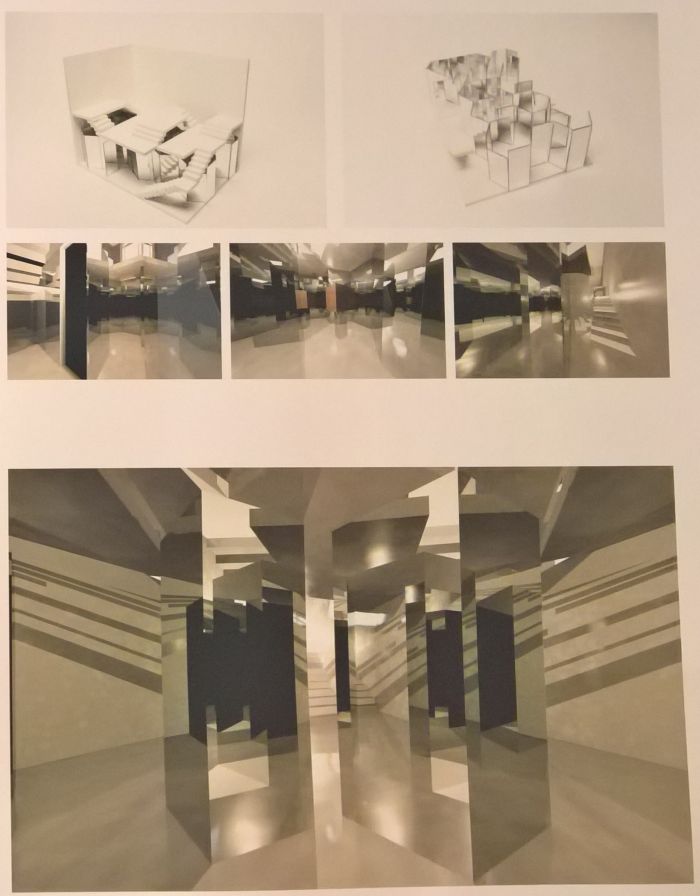
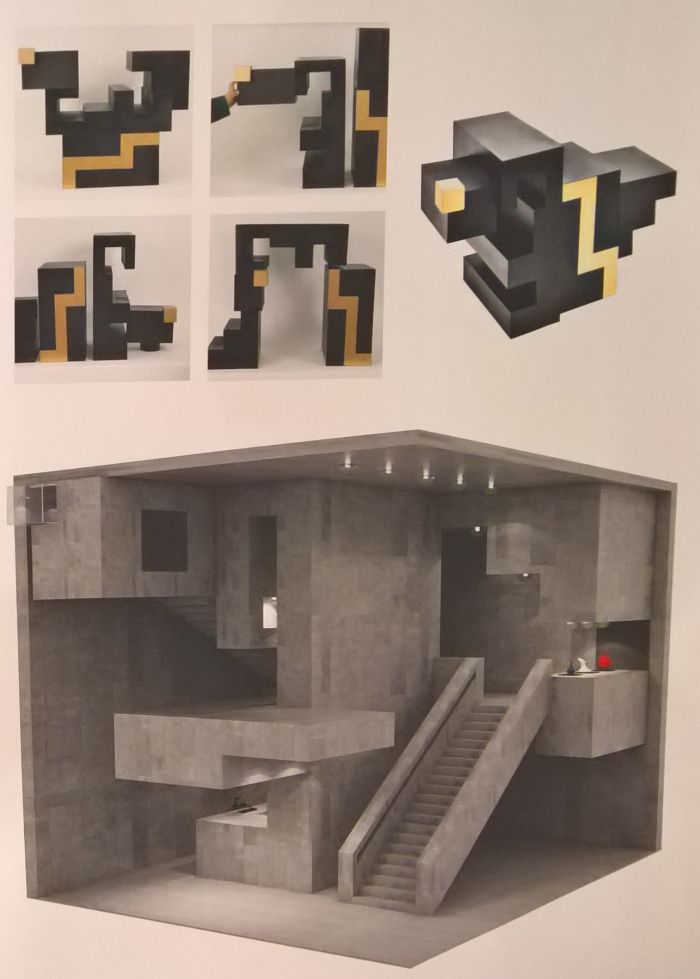
In conversations concerning autonomous cars we regularly ask, what is wrong with the train?
They are often dirty, uncomfortable and on longer journeys can become not only dull but also stressful, for all when running late and you fear you will never reach your destination. You reply
A valid answer. And one which irritates us because we know it's true. And know that such thinking is oxygen to the flame of those promoting autonomous cars.
Heman Xia's Interior & Spatial Design Bachelor project offers an alternative answer, through posing a different question.
Rather than asking what is wrong with the train? Heman Xia asks, what is the train? Why should trains just have carriages full of seats? Why can't trains be something else? Why can't train travel be as much about the journey as about your destination?
To that end Heman Xia has imagined a series of alternative train carriage interiors which offer a variety of public and private spaces, propose the inclusion of mixed use zones, and greenery, and which thus transform the train travel experience.
And thus for us represents one of those painfully obvious ideas, yet one which isn't easily arrived at; and that despite the historic examples of train carriages whose function was more leisure and pleasure orientated than purely transportation.
A contemporary example for us of such is the complimentary children's entertainment service offered by Deutsche Bahn, and which sees qualified childminders/play leaders travel in the family section of selected high speed ICE trains with cases full of toys, story books, creativity and general distraction from the stress of travelling long distances.
Heman Xia's project, essentially, proposes the same on a universal scale for adults and children.
We know, we know, safety safety safety.... But let's be honest, if a train crashes at any sort of speed your chances of survival aren't that great. And trains don't crash that often.
And yes such carriages can transport fewer people, but the idea wouldn't be to have trains exclusively of such but to have them as additional carriages. Passengers will still want to work, read, sleep, and standard carriages will continue to provide space for that. With the option to visit a greenhouse, a lounge or find a quite secluded corner if and when the need takes.
And thus provide one less argument for the autonomous car.
Full details on Chelsea College of Arts can be found at www.arts.ac.uk/chelsea and details on all 2017 graduation projects can be found at http://chelseadegreeshow.com
